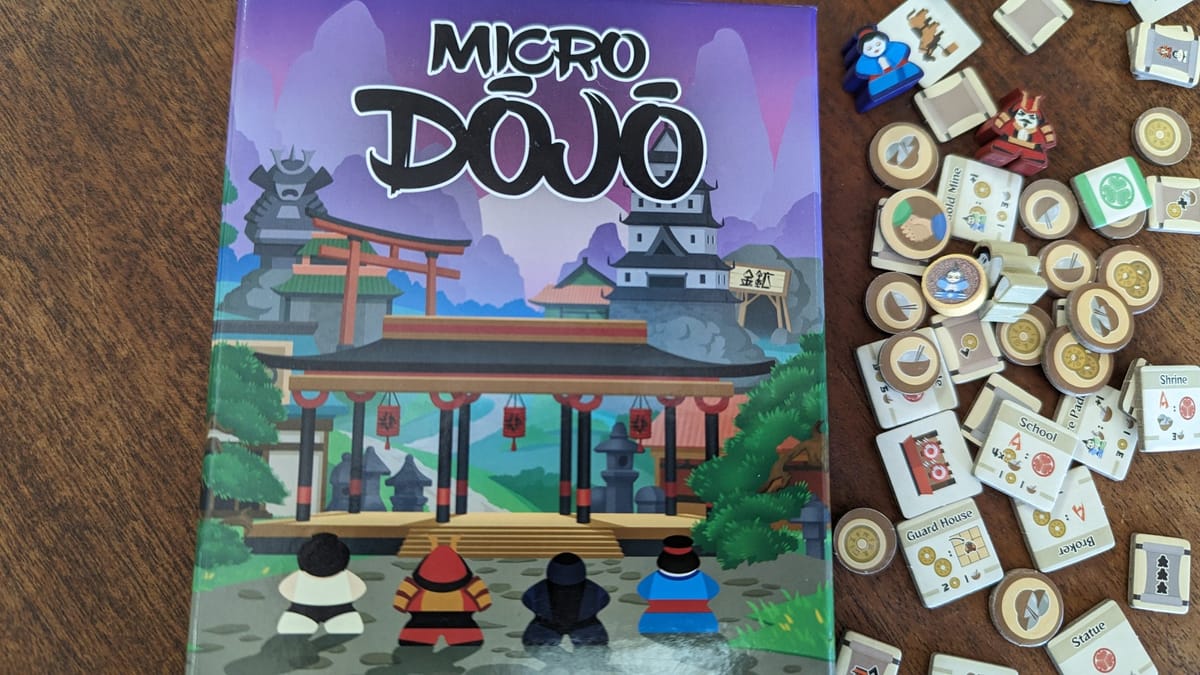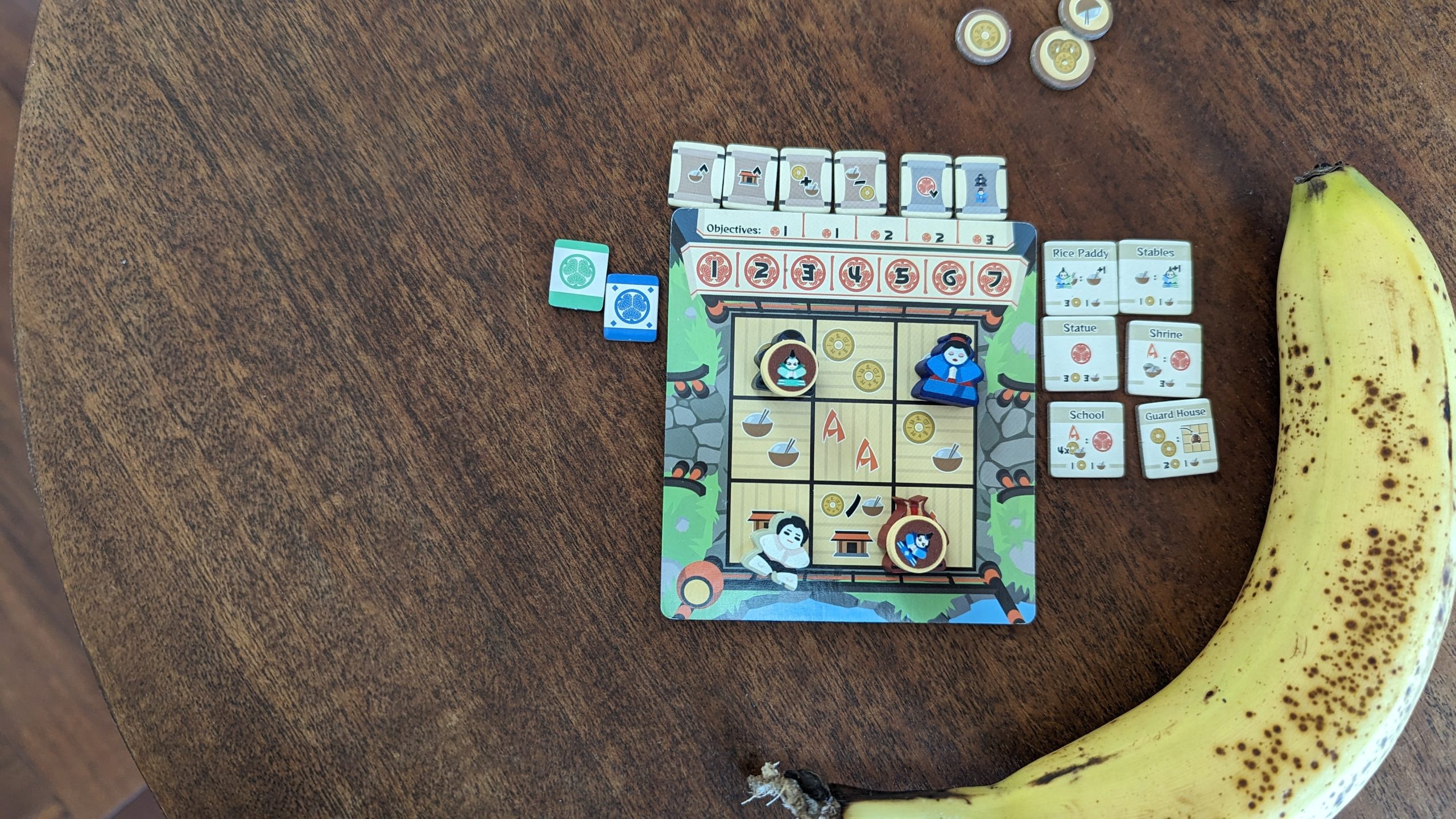
Say what you will about crowdfunding, it has really helped drag board game production out of the stone age of beige spreadsheets into something that looks professional and doesn’t immediately turn off all but the most German passerby. Nowadays, games typically aim for an impeccable presentation in order to stand out from the crowd, even if the gameplay itself is disappointing. I say that, and here I am writing a review for Micro Dojo, which is the exact opposite: a wonderfully tight game with some questionable component decisions that render it almost unplayable. I’m a huge fan of smaller games, from Button Shy’s wallet series to Oink’s little boxes stuffed with cards and bits, but Micro Dojo’s box and tokens wind up in a scale version of the uncanny valley. The box is just a bit too big to comfortably fit in a pocket, but its contents are unnecessarily miniscule to the point that actually manipulating any piece to play the game becomes its own dexterity mechanic.
Gameplay itself consists entirely of moving one of two available meeples orthogonally on the game’s 3×3 grid, nabbing whatever reward is depicted on the space you moved into, and putting your token on top of the moved meeple, putting it on cooldown until after your next turn. The rewards come in three varieties:
- gain gold and/or rice
- build or destroy a building
- use an action to use a building, score the next objective, or donate resources to score a point

While the board itself is static from game to game, every game’s setup includes randomized objectives and buildings, meaning every game is a different contest to find the most efficient way to score points while simultaneously blocking your opponent’s efforts to do the same. Since every turn you’re blocking a new space and putting a new meeple on cooldown while opening up previously blocked ones, players are constantly balancing between playing to advance their own plans and impeding each other’s.You play until either all 5 objectives have been scored, or someone hits the score cap of 7, with whoever reached the higher score winning, which winds up wrapping up in a speedy 10-15 minutes. If the game lasted any longer, the lack of strategic depth would sink it, but as it is, the basic game is a nice little tactical duel.
The box comes with advanced rules that add more complex objectives and give each meeple a special movement rule, which is once again randomly determined at setup to be free or come at a resource cost. While they are an extra layer of rules overhead, I don’t think the advanced movement rules make the game better or worse, just different. The ninja swapping places with a different meeple and the geisha never being on cooldown certainly makes it much harder to hem your opponent into a bad play, and the added costs serve to make it an interesting decision. The advanced objectives, on the other hand, are a total mixed bag. Some of them are more of the same, outdo your opponent in some fashion, but most of them pertain to having certain arrangements of meeples on the board, which I have never had actually happen in all of my plays. These impossible objectives still have to be scored to move on to others and move towards the objective ending, but since they still take an action to resolve, what they do in practice is slow the game to a crawl while both players set themselves up for a max points end without gaining objective points. The end result is games with arrangement objectives wildly overstaying their welcome, falling prey to the aforementioned lack of strategic depth. Suffice to say, I think the advanced movement is worth a spin, but I’d keep the objectives in the box.
Micro Dojo
Good
Micro Dojo is a 9/10 two-player filler reduced down to such a miniscule scale that it no longer feels worth the effort. That I seriously considered putting tweezers in the box speaks volumes.
Pros
- The (mechanically) best two-player filler I've played since Caesar
- I am partial to smaller boxes
Cons
- Everything is so small that actually playing the game is a nightmare
- The components are tiny, but the box is still too big to comfortably fit in a pocket. Why?
